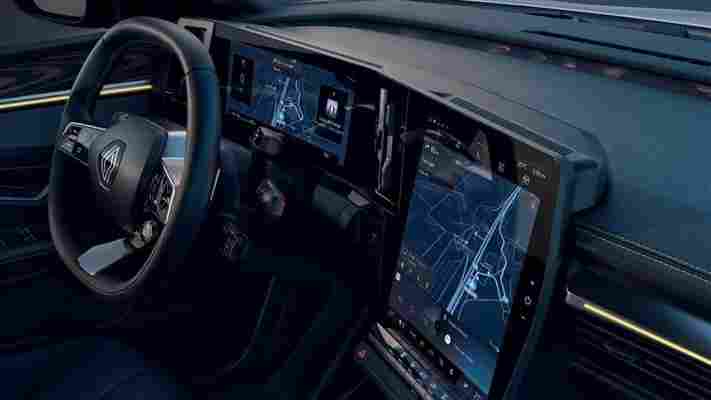Facebook, sorry, Meta , has filed hundreds of applications for patents related to its metaverse, several of which have been granted and point to how the company plans to make money through its virtual world.
According to The Financial Times , which has reviewed many of said applications, Meta could implement hyper-targeted advertising and sponsored content. There are also proposals to create virtual stores where you can buy digital goods.
Some patents suggest creating even more personalized ads based on a user's age, gender, the likes and comments they leave on social media, and how long they look at specific ads.
"Clearly, you could do something similar [to existing ad targeting systems] in the metaverse — where you’re not selling eye-tracking data to advertisers, but in order to understand whether people engage with an advertisement or not, you need to be able to use data to know," said Nick Clegg, Meta's head of global affairs.
Clegg also told The Financial Times in a recent interview, "For us, the business model in the metaverse is commerce-led. Clearly ads play a part in that."
Will any of this actually be made?

Another patent for an "avatar personalisation engine" talks of creating digital replicas of people, with the aim to make the metaverse's avatars seem indistinguishable from real people.
There is also talk of reading a user's facial expressions and adapting content around them, using eye and face tracking technology to enhance the experience (e.g., showing brighter graphics if a user's gaze falls) and a "wearable magnetic sensor system" for body pose tracking. That last one includes sketches that suggest such a system could depict the user as something else in the metaverse, like a knight in armor.
However, patents are never a guarantee that something will actually be made, something Meta itself acknowledged: "While we don’t comment on specific coverage of our patents or our reasons for filing them, it’s important to note that our patents don’t necessarily cover the technology used in our products and services."
While all this technology talk may be exciting for some, many still aren't sold on the metaverse as a whole. If anything, all this talk of ads makes it sound no different than how the Internet already is and fails to make it sound any more beneficial.
Critics also still believe that the company's recent rebranding is meant to distract from last year's leaked documents which alleged that it is purely profit driven, meaning it allowed misinformation and bigotry to spread on platforms like Facebook so long as it made money.
LOL champion and Arcane hero Vi comes to Fortnite Chapter 3
Characters from the hit series Arcane are blasting back into Fortnite, and this time Jinx is bringing her sister Vi along for the ride.
The League of Legends (LoL) champions rose to new levels of fame after appearing in the hugely popular Netflix series , and Fortnite is once again collaborating with LoL developer Riot Games so players can roam around the new Chapter 3 island as the dynamic duo.
Arcane Vi will make her Fortnite debut on Saturday, January 22 at 7 PM ET/4 PM PT (Sunday, January 23, 12 AM GMT / 10 AM AEST) when she lands in the Item Shop – with Jinx returning to the store at the same time.
Alongside the Fortnite skins , players will be able to pick up a slew of different cosmetics to create a full Arcane-inspired loadout.
The Pow Pow Crusher Pickaxe and Playground (Instrumental) Lobby Track will make a comeback. Meanwhile, players will also be able to snatch up the new Piltover Warden Hammer Pickaxe, the Punching Practice Emote, and the Piltover's Finest Loading Screen.

When Jinx first appeared in Fortnite, her skin cost 1,500 V-Bucks, so she should return at that price – and we expect Vi’s outfit will cost the same.
If you decide to pick up either outfit, you’ll also nab a free back bling – the Memories of Zaun bunny or Jinx’s Dream Monkey respectively.
Alternatively, if you want to go all-in, each skin will be available in a bundle with the other cosmetics – and grabbing one of these will score you a nice discount.
The Arcane Jinx Bundle includes her skin, back bling, Pow Pow Crusher pickaxe, the Playground track, Wreaking Havoc loading screen, and the Katchoo! loading screen for 1,800 V-Bucks.
Meanwhile, a new Arcane Vi bundle will package together her skin, back bling, Piltover Warden Hammer pickaxe, Punching Practice emote, and bonus Piltover's Finest loading screen. Vi's bundle price has yet to be revealed, but we expect it'll come in at 1,800 V-Bucks just like her sister's.
Analysis: Who's headed to Fortnite next?
Arcane Vi is just the latest in a long list of collaborations between Epic Games and other major media franchises.
Recently, Hawkeye and Kate Bishop make an appearance after their Marvel Phase 4 TV show landed on Disney Plus . Their Marvel buddy Spider-Man has also swung around the Fortnite Island.
As for video games, Chapter 3 introduced Marcus Fenix and Kait Diaz from the Gears of War series to the battle royale. Fortnite has previously added fan favorites like Halo Infinite 's Master Chief and God of War 's Kratos to its roster, too. And we've even had characters from books appear – with the Mistborn series character Kelsier being added to the game last year.
Based on the completely wild list of Fortnite collabs we've seen – including plenty of competitors putting their differences aside to ensure their rival characters can battle it out in the game – it's nearly impossible to predict who will show up next.
One incredibly surreal choice could be Frasier – yes, really – after rumors started spreading that Paramount and Epic Games had signed a partnership to bring the beloved TV character to Fortnite. More likely, though, we'll see the likes of the Teenage Mutant Ninja Turtles and characters from Star Trek show up as part of the Paramount deal, but we can always dream that the sitcom favorite will show up, too.
Qualcomm partners with Volvo, Honda and Renault in fresh automotive push
Mobile chip maker Qualcomm has lifted the lid on its plans to provide hardware and software for future Volvo, Honda and Renault models at CES 2022 .
The US-based company, which also confirmed it would be developing chips for BMW's self-driving cars towards the end of 2021, took to the trade show floor in Las Vegas to discuss the suite of infotainment and assistance tools now available to the above automakers.
Those tools, dubbed collectively as the Qualcomm Digital Chassis, include Snapdragon Ride, Snapdragon Cockpit, Snapdragon Auto Connectivity and Snapdragon Car-to-Cloud Services.
Each covers a different technological area – be it driving assistance or multimedia – and the partnered car brands can choose to implement these features collectively or in isolation.
Volvo, for instance, will implement Qualcomm's Snapdragon Cockpit – software for powering multiple displays and immersive audio systems – in its upcoming fleet of electric cars, including those under the Polestar banner.
That means vehicles like the Polestar 3 SUV and the Swedish automaker's soon-to-be-released fully electric SUV will boast infotainment systems that are "twice as fast" as their predecessors, with their ability to generate graphics "up to 10 times faster."
Honda will likewise utilize Qualcomm's advanced infotainment technology in cars coming to the US in the second half of 2022, and globally in early 2023. Upcoming models will benefit from improved AI experiences and in-cabin capabilities like blind spot reduction aids, assisted braking notifications and signals for approaching emergency vehicles.
The Renault Group, meanwhile, will work with Qualcomm to leverage a more inclusive adoption of all the tools available as part of the Snapdragon Digital Chassis.

The implementation of Snapdragon Auto Connectivity, for example, will mean upcoming Renault models are likely to feature market-leading LTE, 5G, Wi-Fi and GPS systems (read: top-of-the-range sat navs).
We already knew Qualcomm and Google have joined hands to supply a key computing chip for the digital dashboard of the next-generation Renault Megane E-TECH, with the in-development Renault 5 EV likely to benefit from the partnership, too.
The future is automated
Perhaps the most interesting tool in the Qualcomm Digital Chassis, though, is the Snapdragon Ride system.
After Qualcomm's $4.5 billion purchase of automotive technology firm Veoneer last year, the Snapdragon Ride suite now includes a new chip for computer vision which, the company says, is capable of tapping into a car's set of cameras to vastly improve safety features like automatic lane control.
Models developed by automakers making use of this particular tool will also benefit from improved map crowd-sourcing, driver monitoring systems (DMS), parking systems and cellular vehicle-to-everything (C-V2X) technologies.
There's every chance, then, that the first commercially-viable self-driving car could wear a Volvo, Honda, Renault or BMW badge.
In any case, CES 2022 has proven to be a promising showcase for a number of emerging automotive technologies – did you know Sony is building an electric car? – and we're excited to see how the industry develops further in the years to come.